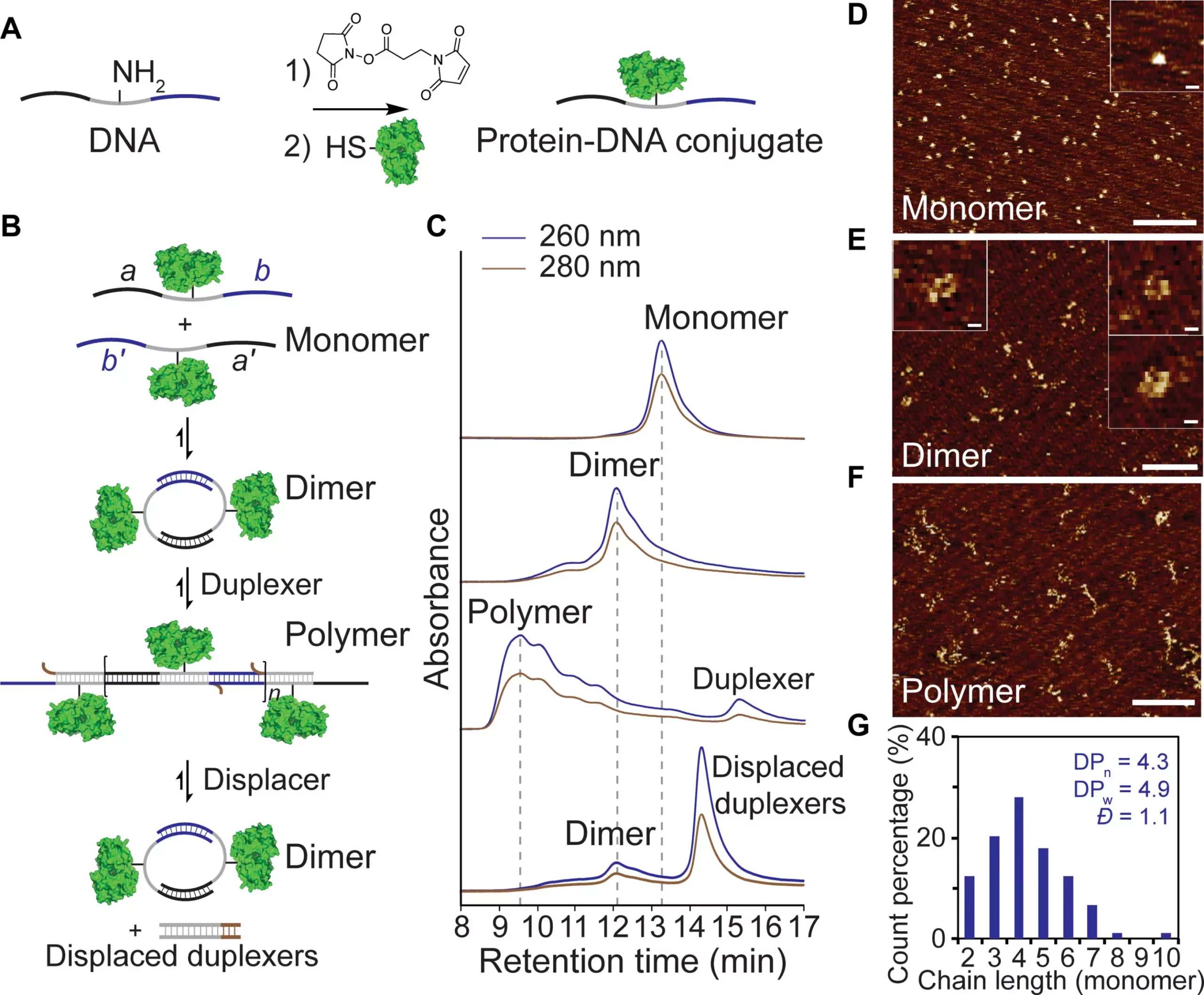The study published in Science Advances by Northwestern investigators led by Chad Mirkin, Ph.D., sheds light on how manipulating DNA chemistry can lead to the creation of new materials with applications in medicine and the life sciences. This breakthrough research demonstrates the strategic design and preparation of DNA systems that can be toggled to achieve different shapes, flexibilities, and reactivities. By understanding DNA cyclization and using chemical design, researchers are able to explore new possibilities in biomaterial composition and structural manipulation.
During biological processes such as DNA transcription, DNA can bend to form a circle through cyclization. This behavior allows DNA to interact with surrounding proteins in unique ways, offering opportunities for novel biomaterials. By introducing unhybridized bases into DNA sequences, researchers found that the DNA becomes more flexible and can adopt a circular structure. This flexibility in DNA structure opens up possibilities for creating dynamic polymer chains and nanoscale materials with diverse properties.
The manipulation of DNA structures through chemical design allows researchers to control the flexibility and shape of DNA strands. By introducing complementary strands to bind with unpaired regions in the DNA, researchers were able to unravel the circular DNA structures into long, linear polymer chains. This reversible bonding interaction demonstrates the programmable nature of DNA as a building block for constructing materials with varying properties.
Implications for Nanotechnology
The findings of this study have broad implications for nanotechnology, highlighting the versatility of DNA chemistry in creating unique and functional materials. By utilizing DNA as a programmable structural element, researchers can engineer materials such as fibers, gels, plastics, and colloidal crystals with specific properties. This ability to manipulate DNA interactions opens up new possibilities for synthesizing materials-by-design and organizing biomolecules in controlled ways.
The research led by Chad Mirkin and his team at Northwestern University showcases the power of DNA chemistry in creating new materials for various applications. By understanding and manipulating DNA structures, researchers can design dynamic polymer chains, nanoscale materials, and biomaterials with unique forms and properties. The programmable nature of DNA opens up a world of possibilities for the synthesis of tailored materials and the organization of molecules in both laboratory settings and biological systems. This study represents a significant step forward in utilizing DNA as a versatile building block for materials science and nanotechnology.


Leave a Reply